Particle size analysis ensures product quality by examining individual particle sizes. Test sieves are essential tools in this process and have improved in strength and reliability. This guide will explain test sieves and how they can enhance your work.
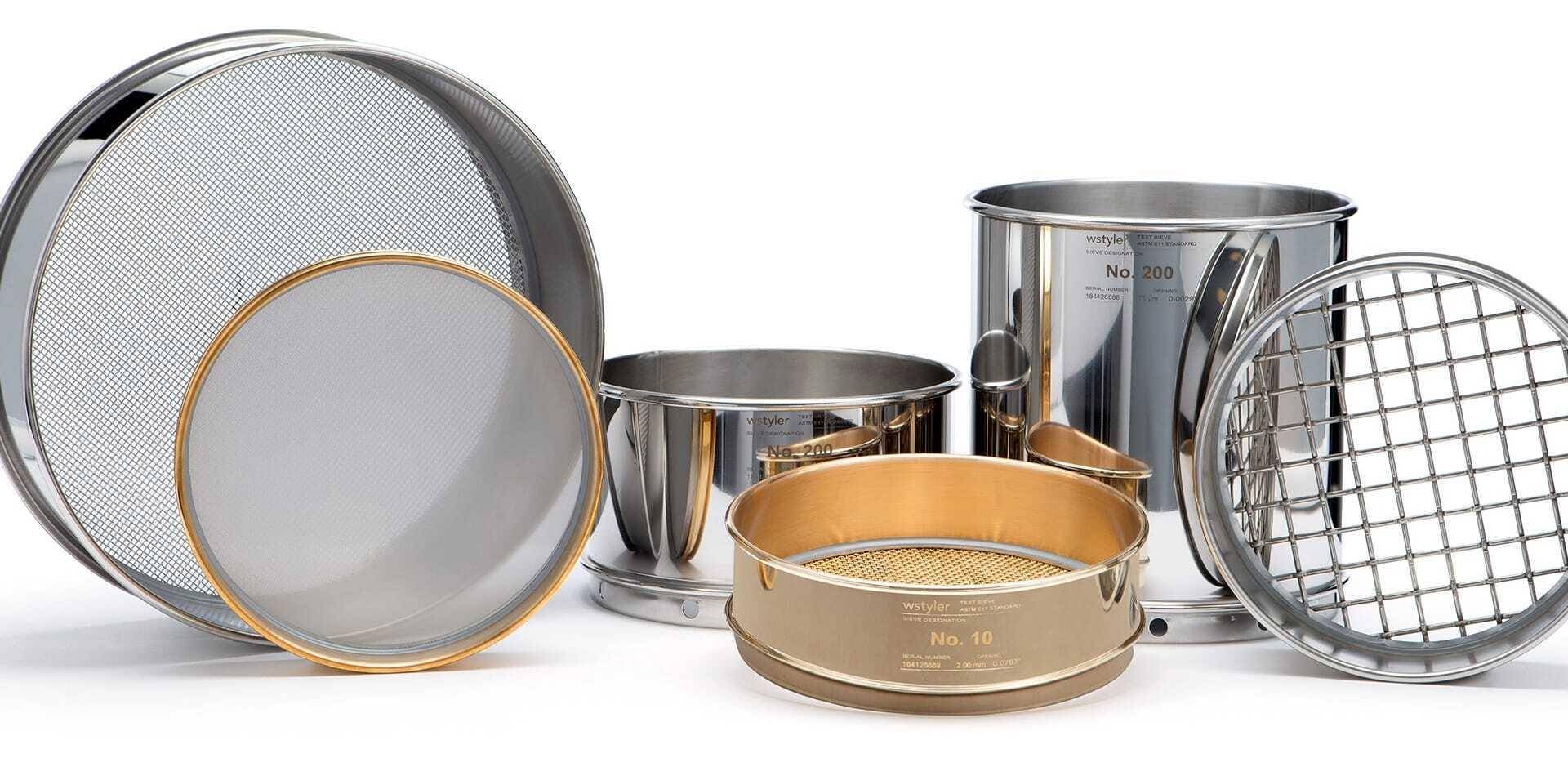
Chapter 1
A test sieve is a tool used for analyzing particles. It has a mesh screen with even openings, which is set onto a frame. It helps to sort particles in a material sample and shows the size distribution of those particles.
As they have been used for centuries, there are industry standards that dictate the sieve types and specifications you should use.
Most test sieves are constructed from a frame, a skirt, and some sort of screen. The frame is designed to provide space between sieves when stacked, which allows the particles to be distributed evenly.
The skirt of a sieve serves as a supportive element that prevents them from moving erratically when conducting a test sieve analysis.
Stainless steel woven wire mesh is most widely used as it has a screening range of 4″ (100mm) to 635 mesh (20um), while providing maximum durability. That said, perforated plate is another screening media that is commonly used.
NOTE: Test sieve cloth is woven differently than other mesh products. The loom must be monitored closely to ensure the mesh openings are exact and comply with the tolerances set by ASTM or ISO.

A sieve shaker is a particle analysis instrument that is employed to agitate your test sieve stack and promote particle movement. That said, hand sieving can be used to create the same level of agitation.
Wet test sieves are commonly used in the aggregate industry because clay and silt stick to aggregates, making them appear larger than they are. Using water removes this dirt, ensuring accurate testing.
Chapter 2
Five factors influence the overall cost of a test sieve. These factors include the type, alloy, mesh size, sieve size, and certification.
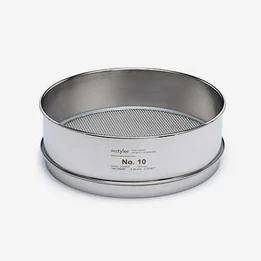
Dry test sieves are generally what are used to conduct a test sieve analysis (see below). They have the frame, skirt, and wire mesh screen profile that was discussed above.
Lab technicians can use them individually during a hand sieve analysis or in a sieve stack that is placed in a sieve shaker.

As these test sieves are designed to be used for wet sieve analysis, they are constructed using a deeper frame profile. Having said that, they utilize the same wire mesh screening media as dry sieves.
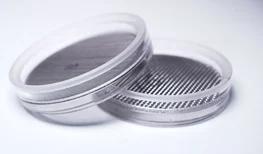
Test sieves fabricated with a 3-inch acrylic frame, allowing them to fit sonic separator devices. Their transparent frame allow you visually see how well sample material is traveling through the stack.
This, in turn, allows you to make adjustments to your sonic sieve analysis on the fly.
A good rule of thumb to follow is: the taller the sieve; the more expensive the sieve will be. This is because taller sieves require more material to be created.
Chapter 3
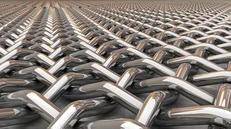

When it comes to the price difference between ASTM- and ISO-regulated wire mesh, there is no difference. In other words, an 8-inch, full-height, U.S. #10 test sieve will cost the same as its ISO-regulated counterpart.
Chapter 4
A representative sample is a portion of material that is used to represent the entire production line. As your representative sample’s size and consistency dictate how you conduct your particle analysis, it is the first step.
Employing a material splitter is the best way to do this.
Chapter 5
Typically, test sieves up to 8″ in diameter would be ideal for testing these particles accurately. If your sieve analysis operation resembles this, you can identify which sieves within this sieve size range are best suited for you in your industry standards.
To that end, particles with an average size larger than 1″ may produce more accurate results when placed in 12″ sieves. This is because these sieves are slightly deeper, providing more room for larger particles to find the mesh openings efficiently.
After the sample weight is recorded, you must run the sample through a test sieve stack to generate a reliable distribution curve. This is where having the correct sieve size is everything.
Chapter 6
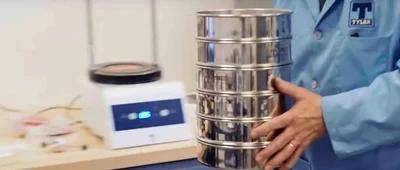

Chapter 7
The ASTM E11 is a standard that oversees the production of test sieves, specifically the mesh openings, wire diameters, frame size, and cloth mounting employed. This standard was developed to ensure that any given ASTM compliant test sieve produces accurate and repeatable results no matter the industry.
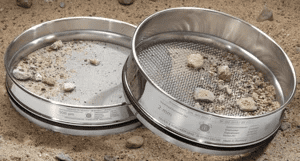
Chapter 8
Visually inspecting your sieves is an easy technique that can help you identify any wear and tear that may hinder the accuracy of your results. It is recommended that you form and execute a regular inspection schedule that compliments that amount in which your sieves are used.
When inspecting your mesh, you should be watching for dents in the screening media, scratches in the screening media, and any cracks in the epoxy.
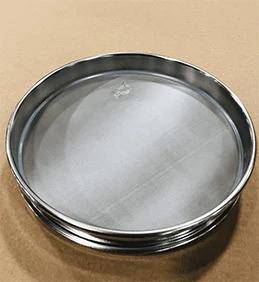
Hold your sieve up to a reliable lighting source and examine to see if the wire mesh screen is still drum-tight. If any dents are identified, the test sieve should be taken out of any testing procedures.
These dents are likely to cause the integrity of the mesh openings to be compromised, which is one of the leading causes of false analysis results.
Using the same methods and ideology with dents, you should examine your sieves to identify any scratches in the mesh. Scratches often turn into rips and tears, which will render your results unusable.
The best way to ensure accurate and repeatable results is to replace the sieve if the scratch is prominent.

Test sieve epoxy is a strong adhesive that connects the mesh screen to the sieve skirt. It can withstand harsh materials like aggregate but is susceptible to wear and tear. Regularly check for cracks in the epoxy seal to prevent particles from passing through and causing inaccurate sieve results.
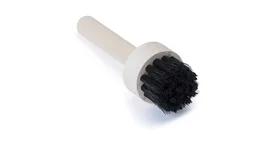
Several brushes are designed for cleaning test sieves, using brass or nylon bristles to clear debris without damaging the mesh. For delicate screens, use nylon brushes to avoid damage, while brass brushes are suitable for larger mesh openings due to their durability.
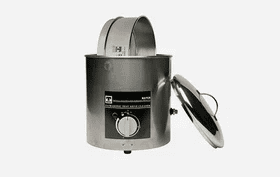
There are some mesh opening sizes that can prove difficult to clean, as they are too fine for the bristles to reach the opening properly. Ultrasonic sieve cleaners were designed to combat this as it uses ultrasonic vibrations to dislodge particles from the finest of mesh openings.
Important Don’ts
As you continue to use your test sieves, you will want to ensure you continue to yield accurate results that comply with your industry standards.
During the certification process, the sieve is first visually examined to identify any tears, wrinkled mesh, or cracks in the epoxy. The sieve is then scanned using a specialized microscope that analyzes the mesh openings to ensure no stretched or clogged openings are present.

Test sieves have been used to accurately separate the particles of various materials for centuries. With the ability to be customized for your specific needs, test sieves are regarded as one of the most reliable and efficient tools currently on the market.
But while test sieves are easy to implement and use, you must find a manageable sample weight to sieve size ratio for best results. With regular maintenance and upkeep, test sieves will consistently produce accurate and repeatable particle analysis results.